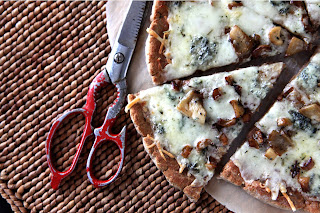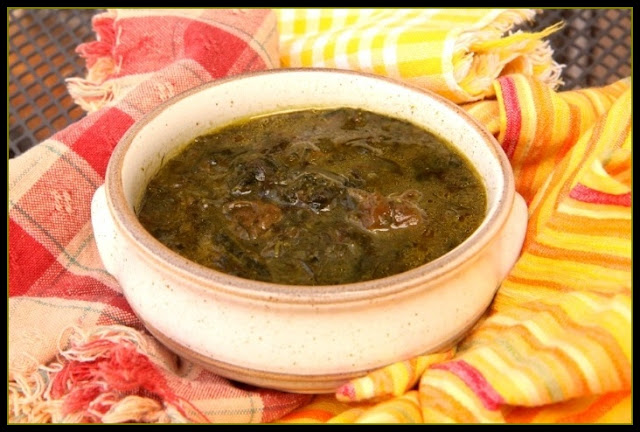Adventures in Gluten-Free Baking: The Chestnut Flour Files
You know the drill. You buy yet another kind of gluten-free flour, hoping it will be the one. You try it in a recipe and it fails, and it ends up sitting on your shelf for the rest of eternity. That's how I found a bag of chestnut flour lurking at the back of my cupboard last week. The recent cold snap has caused distant taste-memories of eating roasted chestnuts on the streets of London to haunt my brain. Mmmm, chestnuts. I pulled out that bag of chestnut flour and gave it a second chance.
 Chestnut flour was a huge success in my pizza crust recipe. The chestnut flour crust was, by a long shot, the best gluten-free pizza crust I've ever had (and I thought my other one was pretty good). The crust cooked all the way through, with no gumminess or odd textures. It had a tender quality that reminded me a lot of whole wheat pizza crust. Mind you, it's been a few years since I've tasted wheat, so I could be off on that perception.
Chestnut flour was a huge success in my pizza crust recipe. The chestnut flour crust was, by a long shot, the best gluten-free pizza crust I've ever had (and I thought my other one was pretty good). The crust cooked all the way through, with no gumminess or odd textures. It had a tender quality that reminded me a lot of whole wheat pizza crust. Mind you, it's been a few years since I've tasted wheat, so I could be off on that perception.
 I also tested the chestnut flour in my chocolate chip cookie recipe, and it was the first batch of gluten-free cookies I've made that tasted completely normal, the way I remember cookies tasting before the fall of wheat Eden. I've always had trouble getting my gluten-free cookies to have any heft, but the chestnut flour solved that problem. The cookies were dense and chewy and had good weight in the hand.
I also tested the chestnut flour in my chocolate chip cookie recipe, and it was the first batch of gluten-free cookies I've made that tasted completely normal, the way I remember cookies tasting before the fall of wheat Eden. I've always had trouble getting my gluten-free cookies to have any heft, but the chestnut flour solved that problem. The cookies were dense and chewy and had good weight in the hand.
Round two. I tried the chestnut flour in my favorite bread recipe. The bread didn't rise, my heart sank. Another flour failure, or so I thought. I gave it a nibble to see if it could at least be turned into breadcrumbs. Whoa baby! Despite being brick-heavy, it tasted great. I'm still tweaking that bread recipe. As soon as I'm happy with it, I'll be sure to pass it along.
Chestnut flour is light, but dense at the same time, so getting it to rise in baked goods is the trick. I haven't yet tried it, but I suspect one could do a 100% chestnut flour substitution in recipes that don't require much leavening (like cookies, crackers, and tortillas). So far, the only real drawback I can see with chestnut flour is that it is more expensive than some other gluten-free flours. But, holidays aside, we don't eat many baked goods here, so I think I can manage the cost in exchange for outstanding taste and performance.
 Chestnut flour was a huge success in my pizza crust recipe. The chestnut flour crust was, by a long shot, the best gluten-free pizza crust I've ever had (and I thought my other one was pretty good). The crust cooked all the way through, with no gumminess or odd textures. It had a tender quality that reminded me a lot of whole wheat pizza crust. Mind you, it's been a few years since I've tasted wheat, so I could be off on that perception.
Chestnut flour was a huge success in my pizza crust recipe. The chestnut flour crust was, by a long shot, the best gluten-free pizza crust I've ever had (and I thought my other one was pretty good). The crust cooked all the way through, with no gumminess or odd textures. It had a tender quality that reminded me a lot of whole wheat pizza crust. Mind you, it's been a few years since I've tasted wheat, so I could be off on that perception. Gluten-Free Chestnut Pizza Crust
1 Tbsp. yeast
3/4 c. milk, room temp
3/4 c. chestnut flour
1/2 c. cornstarch
1 Tbsp. xanthan gum
1/4 tsp. baking soda
1 tsp. baking powder
1/2 tsp. salt
1/8 c. olive oil
Sprinkle yeast onto milk, stir, and set aside. Combine dry ingredients, then stir in oil and milk-yeast mixture. When dough pulls together into a ball, cover and set aside for 15 minutes in a warm place. On a piece of parchment, pat chestnut dough into a crust shape, and bake in a 400 degree (F) oven until cooked through. Top as you please.
 I also tested the chestnut flour in my chocolate chip cookie recipe, and it was the first batch of gluten-free cookies I've made that tasted completely normal, the way I remember cookies tasting before the fall of wheat Eden. I've always had trouble getting my gluten-free cookies to have any heft, but the chestnut flour solved that problem. The cookies were dense and chewy and had good weight in the hand.
I also tested the chestnut flour in my chocolate chip cookie recipe, and it was the first batch of gluten-free cookies I've made that tasted completely normal, the way I remember cookies tasting before the fall of wheat Eden. I've always had trouble getting my gluten-free cookies to have any heft, but the chestnut flour solved that problem. The cookies were dense and chewy and had good weight in the hand. Gluten-free Chestnut Chocolate Chip Cookies
8 Tbsp. softened butter
1/3 c. white sugar
1/3 c. brown sugar
1 egg
1 tsp. vanilla
1 1/4 c. chestnut flour
1/4 c. cornstarch
1/2 tsp. baking powder
1/4 tsp. baking soda
1/2 tsp. salt
2 tsp. xanthan gum
chocolate chips
walnuts
Cream together butter and sugar, then beat in eggs and vanilla. Stir in dry ingredients, then chocolate chips and nuts. Drop by spoonfuls onto a cookie sheet and bake in a 350 degree (F) oven for 8 minutes. Let cool on the pan for a minute before transferring to a wire rack to cool.
Whenever I make gluten-free cookies, I bake one or two test cookies before filling a whole pan. If the test cookies come out too flat, I add a touch more flour to the dough. If they are too puffy (usually the case), I flatten all the subsequent dough balls with damp fingertips before baking.

